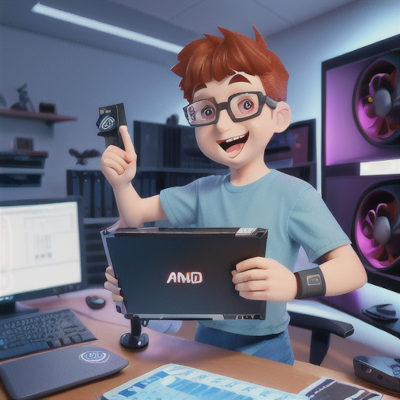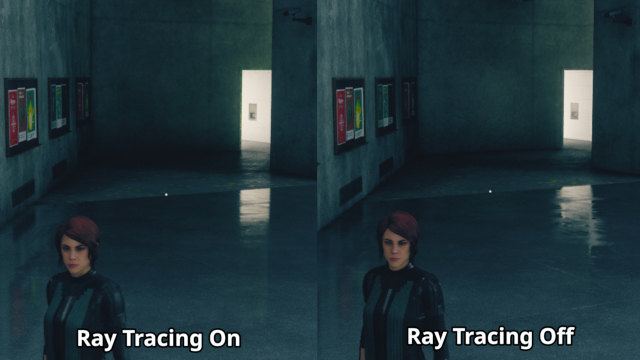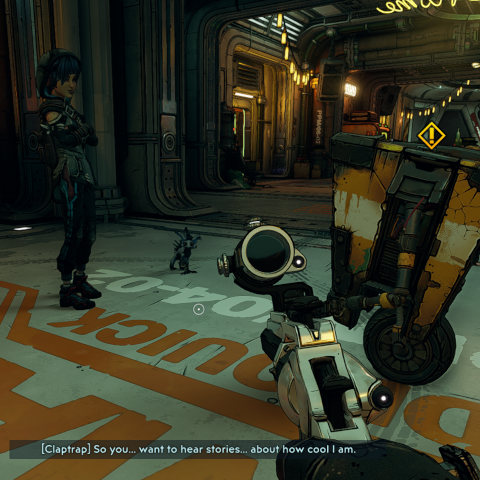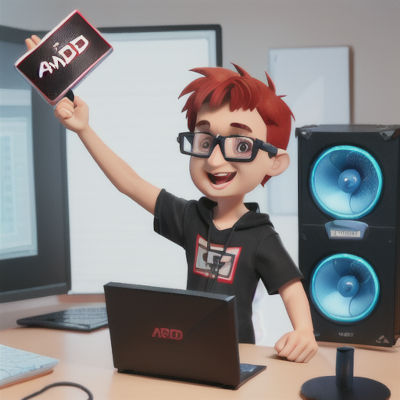I put off a GPU upgrade for as long as I could. I had been running an Nvidia GTX 970 since 2014. It served me well for quite a long time, but by the time I needed an upgrade, crypto mining pushed GPU prices to super-inflated levels. Prices were so high that I paid less for my GTX 970 than a roughly comparable GPU would have cost only a little over a year ago.

I just couldn’t stomach paying so much for an upgrade, so I limped along for a few years longer than I should have. I decided prices have come down enough for an upgrade, so I wound up upgrading my monitor, GPU, and eventually my CPU. Why didn’t I spend more on a GPU? Did I really need the CPU upgrade? Let’s find out!
- Oh No! I Bought A GPU! The AMD RX 6700 XT
- AMD Radeon vs. Nvidia RTX on Linux
- Putting a Ryzen 5700X in My B350-Plus Motherboard Was a Good Idea!
- Should You Upgrade Your B350 Motherboard to a Ryzen 5600 or Ryzen 5700X?
- My New Monitor: The Gigabyte G34WQC A Ultrawide at patshead.com
Stability!
This seems important for me to touch on. I had to install OpenCL drivers from AMD’s Ubuntu repository, and it didn’t take much time after that before I decided I wanted to try bleeding-edge Mesa libraries to see how much ray tracing performance was improved.
I am running the latest Ubuntu LTS, and I installed Mesa libraries from the Oibaf PPA. My machine was locking up randomly at least every other day. Usually I would just find it dead when I woke up, but occasionally my Xserver would just crash and reload.
I have since switched to Ernst Sjostrand’s PPA. I haven’t had any weird crashes or freezes since.
Was the 6700 XT enough of an upgrade? Why not a 7900 XT or an Nvidia GPU?
Until this week, RDNA3 cards like the Radeon 7900 XT didn’t have support for ROCm or OpenCL on Linux. That took those cards right off the table. I need DaVinci Resolve to edit podcasts, and it won’t run at all without OpenCL or CUDA.
Everyone has been talking about how amazing AMD cards are on Linux now. AMD GPUs also offer significantly more performance and VRAM for your dollar compared to Nvidia GPUs. Both seemed like excellent reasons to try out an AMD GPU.
If I couldn’t buy one of the latest RDNA3 GPUs, then I also figured I shouldn’t buy the most outrageous RDNA2 GPU. I thought it would be best to only buy as much GPU as I need today, and we can see how far that carries me.

I am going to say that the 6700 XT has been enough of an upgrade. I can run a lot of nearly recent games, like Prey and Severed Steel, at 3440x1440 with settings cranked up to high or ultra and still manage to keep the frame rates up near 100 FPS. There are some newer games, like DEATHLOOP and Tiny Tina’s Wonderlands, where I have to drop the resolution to something around 2700x1160 and let FidelityFX SuperResolution (FSR) scale that up to native resolution to maintain 100 FPS.
The only game making me wish I splurged on a 6800 XT is Control. I can max out the settings with ray tracing enabled at 1080p, and the game can nearly run at 60 FPS. I would enjoy playing through Control with RTX, and spending an extra $120 would have put me in a good position to do that.
I did get to play through Severed Steel at native resolution with RTX enabled, and that looked quite cool!
- Severed Steel is My New Favorite First-Person Shooter
- Oh No! I Bought A GPU! The AMD RX 6700 XT
- MSI Radeon RX 6700 XT at Amazon
Is 12 GB of VRAM enough?!
We have been talking about this a lot on our Discord server lately. Let’s start by talking about how things are going today.
Most of the games I am running never manage to use more than 8 GB of VRAM, and I have the texture settings dialed up to the limit. Control seems to sit at about 6 GB, Red Dead Redemption 2 also needs around 6 GB, and Borderlands 3 seems to top out at around 8 GB.
DEATHLOOP is a weird exception. No matter where I set the texture slider, it winds up using all available VRAM. I suspect it just never unloads unused textures or something. I wouldn’t be surprised to find that DEATHLOOP would run just fine with less total VRAM.

There are games that exist today that use more than 8 GB of VRAM, and it sure sounds like we will be seeing games fairly soon that won’t fit in my 12 GB of VRAM.
I don’t have solid advice, but I have some feelings. I don’t have a lot of faith that Intel will remain in the GPU market, and their drivers lack polish, but the Intel ARC A750 8GB was on sale today for $200. Who cares if it is future proof? It can play most current games at 1440p at 60 FPS with a bit of FSR. That is a fantastic value. I have similar feelings about the Radeon 7600 with 8 GB at $270.
I do not like the Nvidia 4060 Ti 8 GB at $400. This card is for sure going to be fast enough to play games that require 12 GB of VRAM, but it won’t have enough VRAM to load them. I think this is a terrible deal.
My 6700 XT has gone on sale for even lower prices since I bought mine two months ago, but I feel pretty good about it. I paid $380. My card has better raster performance than the $400 4060 Ti, and I have an extra 4 GB of VRAM. I think you can sometimes find my GPU for under $350 now.
I also upgraded from a Ryzen 1600 to a Ryzen 5700X
This was definitely a worthwhile upgrade, but if you are following my lead, you should skip the Ryzen 5700X and just put a Ryzen 5600 in your old B350 motherboard. The 5700X is only 8% faster in extremely multithreaded workloads, and that isn’t something that will help with any games.
Most of the games I tested didn’t perform significantly better after the CPU upgrade. Borderlands 3 gained a few frames per second. Control didn’t perform any better with RTX enabled. Some games improved significantly.
DEATHLOOP was limited quite a lot by the slower CPU. There were parts of the game where it would drop down under 70 FPS, and when it did, the game just felt jittery. The CPU upgrade moved those low points up by about 20 FPS, and it smoothed out those jittery spots quite a lot.
I am sure there are other games that will benefit from the extra single-core performance of the Ryzen 5700X as much as DEATHLOOP.
- Putting a Ryzen 5700X in My B350-Plus Motherboard Was a Good Idea!
- Should You Upgrade Your B350 Motherboard to a Ryzen 5600 or Ryzen 5700X?
You should enable the new AMD P-State EPP driver!
You can ignore this if you have an Intel CPU or an older Ryzen CPU.
I am not a CPU and GPU benchmarking site. I don’t have lots of data. I don’t have tools to collect interesting information. I mostly only have the seat of my pants and Mangohud.
I had trouble on a lot of maps in Tiny Tina’s Wonderlands. The frame rates stayed quite high, and the frame-time graphs looked smooth enough, but the game felt really jittery when I moved my mouse. This was really in Brighthoof, and it still feels ever so slightly unsmooth there, but it was a problem on other maps as well. Usually in places where your sight line wasn’t blocked by much of anything, and you could potentially see most of the map.

Even turning the settings down to the minimum and dropping the render resolution didn’t solve the problem.
Booting a version 6.3 Linux kernel with the new P-State EPP driver enabled almost completely fixed this problem.
I am pretty sure that it also fixed the times in DEATHLOOP where things were still slightly crunchy after the CPU upgrade.
What about machine learning?
I got Stable Diffusion up and running pretty quickly. There’s some really good documentation to get you going.
That was just about the only machine learning tool that was easy to get up and running with ROCm and OpenCL. Machine learning is dominated by Nvidia’s CUDA.

NOTE: What do you get when you use stable diffusion as your Stable Diffusion prompt? Mostly horses.
Things seem to be getting better. It looks like OpenCL support is coming to LLaMa, and there’s some documentation on the Fauxpilot forums for getting Fauxpilot running on ROCm in a Docker container.
I haven’t tried either of these. I am interesting in messing around with Fauxpilot, but their models that fit in 12 GB of VRAM seem quite limited.
DaVinci Resolve is working quite well
I almost wish I knew how well Resolve is running. My video-editing needs are usually quite simplistic. My old GPU wasn’t exactly slowing me down all that often before the upgrade.
My suspicion is that slow tasks like running a magic mask would be much faster with a similarly priced Nvidia GPU, but I have no way to test this. Running tools like magic mask took significant time on the old GPU, and they still take time on the new GPU.
I guess the important thing for me is that things are working, and I am pretty sure the slow jobs are less slow now.
It is a bummer that I have lost the ability to export h.264 video. It isn’t the end of the world, but it is disappointing.
Conclusion
Even though I couldn’t go bananas on a 7900 XT, for both the sake of my wallet and needing to run DaVinci Resolve, I have to say that I am quite pleased with where I landed with the Radeon 6700 XT. It is quite solidly a 2560x1440 60 FPS card, and I mostly only have to apply a little bit of FSR to stretch that up to 3440x1440 100 FPS.
That is quite reasonable for the $380 I paid two months ago. I keep seeing similar cards on sale for $350 now, and that is even more reasonable!
The Radeon 6700 XT has been a solid upgrade. It runs DaVinci Resolve more than adequately for my needs. It cranks out images from Stable Diffusion at a decent rate. I expect it to be enough GPU for my gaming needs for at least two or three years, and by then, I might be able to get something comparable to the 7900 XT for the same price!